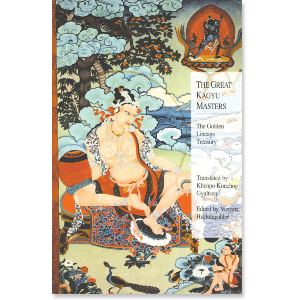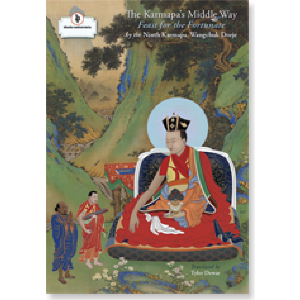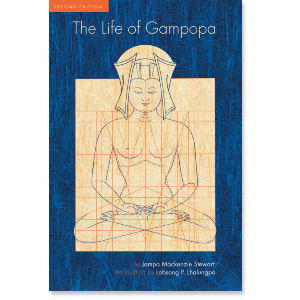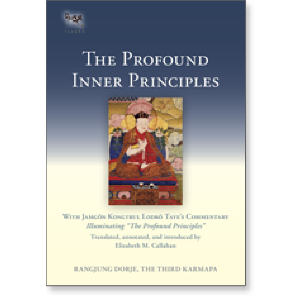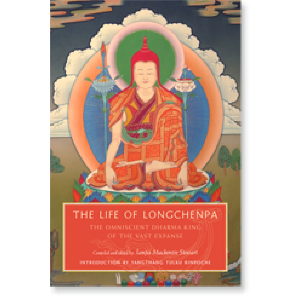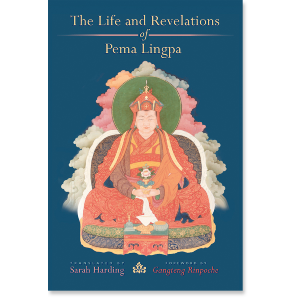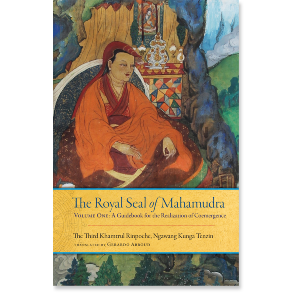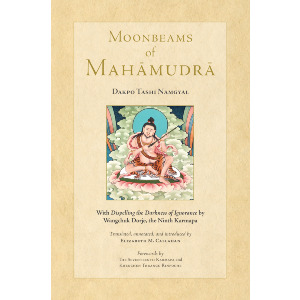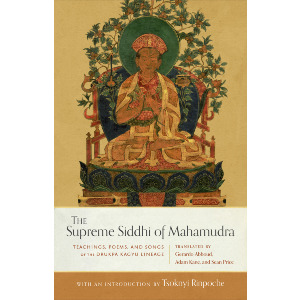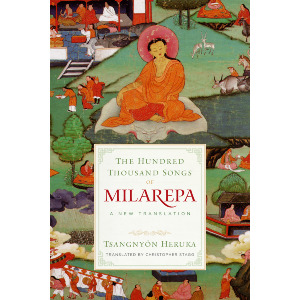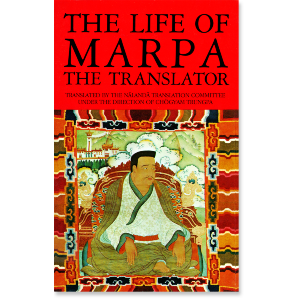| The following article is from the Autumn, 1987 issue of the Snow Lion Newsletter and is for historical reference only. You can see this in context of the original newsletter here. |
Drukpa Kagyü
(Kagyu, Kagyü, or Kagyud school)
Meaning "Oral Lineage" or Whispered Transmission school
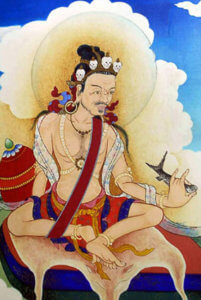
The Great Indian Yogi Tilopa
The Kargyu tradition has a rich heritage with the variety and scope offered by various lineages. The Drukpa Kargyu lineage, like the other Kargyud lineages traces its origins to the great Indian saint Tilopa, and his foremost disciple Naropa. It was in the eleventh century that the renowned Tibetan translator, Marpa undertook three arduous journeys to India. During the years he spent there, studying and meditating under various gurus, notably Naropa and Maitripa, he translated the main corpus of the texts which form the common heritage of the entire Kagyu family.
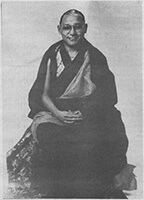
H.H. Gyalwang Drugchen
The name of the Drukpa Kargyud lineage traces its origins to Tsangpa Gyarae Yeshi Dorje (1161-1211 A.D.), the first Gyalwang Drugchen Rinpoche. Tsangpa Gyarae was born covered completely by a membrane and his mother, terrified at seeing this, left him, as he was, a distance from her home. It is said that a vulture, an emanation of a deity, came down and protected the baby under its widespread wings. Subsequent to his birth, the child was discovered and taken care of by some saints. News of his miraculous birth spread far and wide and people flocked to his abode for his blessing.
While yet very young, Tsangpa Gyarae was in the habit of gathering children around him. He would set himself upon a rock in their midst and teach them the Dharma. Instructed by Dakinis to do so, he traveled to Tsari and made this hidden and exceptionally sacred place in Tibet accessible to all. Ever since, this mountain has become a major converging point for spiritual seekers. It was only in the later part of his life that he established his first monastery. This is called Namdrug (Sky dragon) because when Tsangpa Gyarae arrived at the site nine dragons flew up into the sky with a roar. Numerous other auspicious signs manifested, encouraging his guru Ling Gyre Raepato to instruct him to propagate the lineage of the Glorious Drukpa Kargyu.
Many of the Gyalwang Drugchen were famous for their scholarship; notably the 4th, whose collected works comprise 25 volumes and form a main corpus of the entire Kargyud tradition, and the 6th, who was known for his ability to defeat the greatest scholars of his time in philosophical debate at the three great universities of Sera, Drepung and Gaden.
The 11th Gyalwang Drugchen, Tenzin Kyenrab Geleg Wangpo, died at the very early age of 30 in Buxa, in West Bengal, after the hardships encountered on his flight from Tibet. On his death-bed His Holiness agreed to reincarnate soon. Six years later, after an intensive search the 12th Gyalwang Drugchen, Jigme Pema Wangchen, was found.
From the very beginning of his life, the young 12th Gyalwang Drugchen, Jigme Pema Wangchen, evinced loving kindness and compassion towards the smallest insect he saw. At the age of three, one day he told his mother to make preparation for some guests he said were coming. Later that day, he recognized his estate manager and attendants who had come looking for him. He was recognized by H.H. the Dalai Lama and was ritually enthroned as the Head of the Drukpa Kargyud School of Mahayana Buddhism.
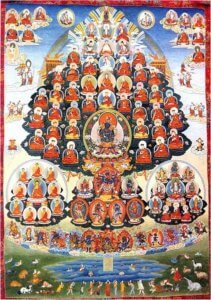
The Kagyu Refuge Tree
The Drukpa Kargyud Association gratefully accepted the benefactors help with the many dharma and social welfare projects that were undertaken, some of these are listed below.
- A Destitute Home had been running at the monastic community in Daijeeling. Food, clothing, accommodation and free schooling were provided. Eighty children were attending with the hopes of welcoming many more. A plan to open a school in 'Ladakh was also underway.
- Plans included an Institute of higher studies on Buddhism. Aspects of modern education were incorporated within the framework of Buddhist studies. A Tibetan medicine center was also to be established. Medical facilities would be provided.
- The Community under-took the massive task of restoring Buddhist texts and making them available for the benefit of all beings. The hope is to revive interest in Buddhism in countries not familiar with it and also to reinforce and strengthen it in the lives of those who are fortunate enough to follow this faith. The compilation and restoration of these precious texts is painstaking and time-consuming. These are particularly rare manuscripts of the Drukpa Kargyud tradition, preserved with utmost dedication by hand-copying through the centuries. There are many texts awaiting restoration and sponsorship and/or assistance is being solicited.
- The Drukpa Kargyud monasteries were located in Ladakh, Himachal Pradesh, Nepal, Sikkim and Bhutan, all of which were in great need of repairs, proper maintenance and support for the monks.
The success of the projects depends entirely upon the appreciation, understanding, involve-ment and generous response of interested individuals. Any contribution, however small, will be gratefully appreciated.
For up-to-date contact information click here.

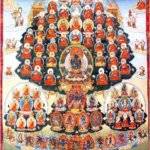
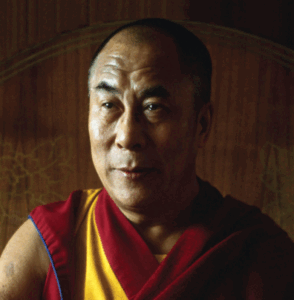 His Holiness the Fourteenth Dalai Lama
His Holiness the Fourteenth Dalai Lama